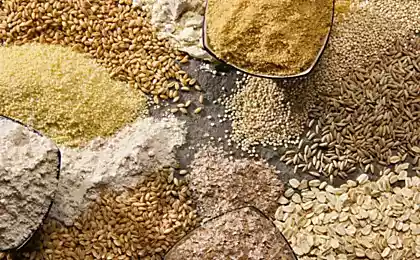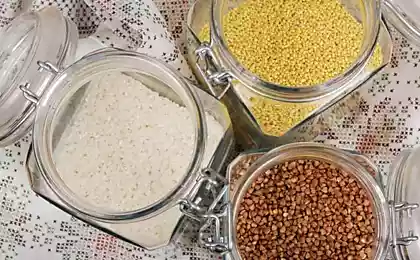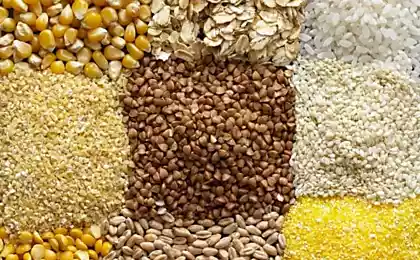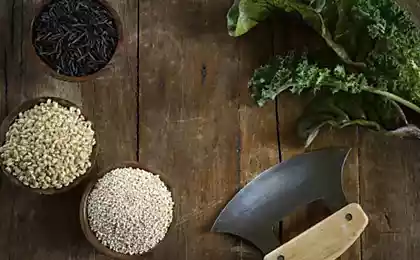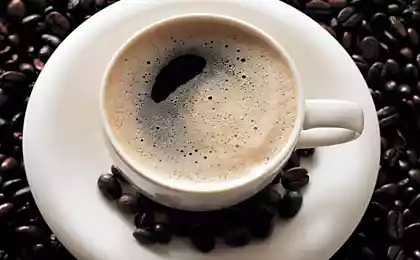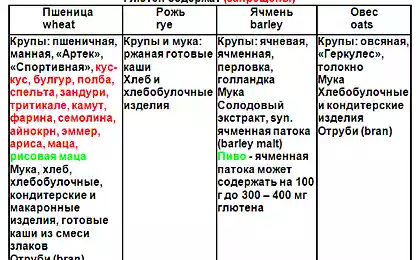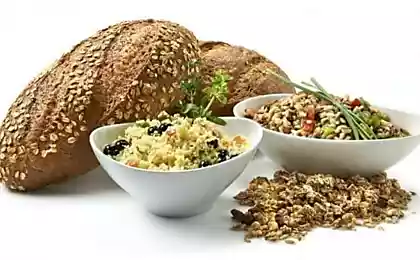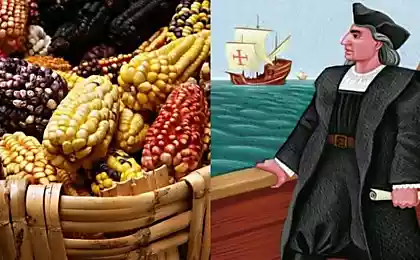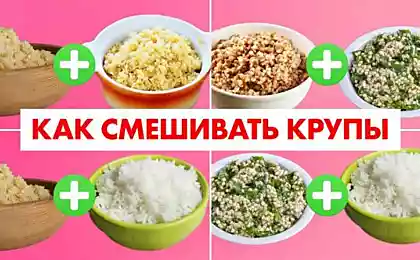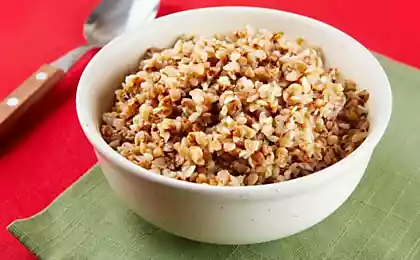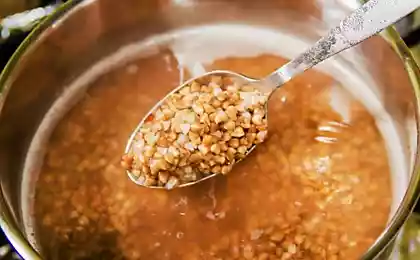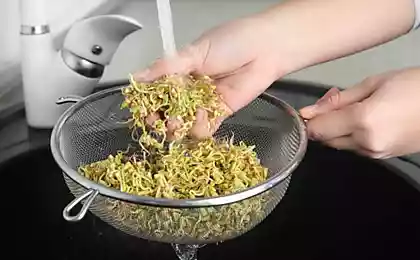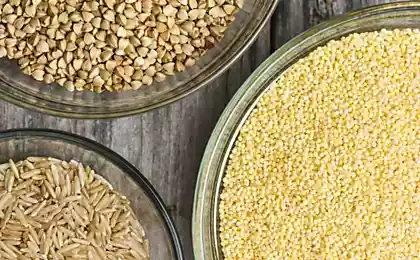625
Whole grains: which grains MUST be soaked
Undoubtedly good advice of many nutritionists to consume grains, consumed our ancestors did and not refined flours and polished rice, is misleading and often carries negative consequences.
Our ancestors consumed whole grains, but they never made them as presented in modern cookbooks in the form of a suitable quick breads, granola (muesli) and others, quickly preparing casseroles and dishes.
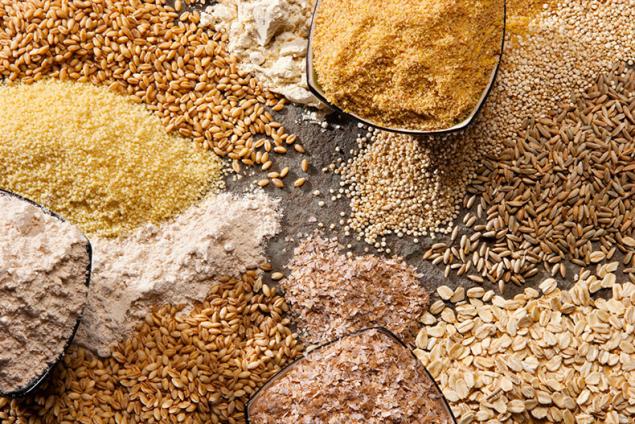
Our ancestors and all uncivilized peoples soaked or fermented grains before cooking porridge, breads, cakes and grain dishes. One look at the recipes of the peoples of the world, it is sufficient to confirm this view.
In India rice and lentils are fermented for at least 2 days before made idli and dosas. In Africa the locals soaked overnight roughly grind the corn before adding it to soups and broths, but they also fermented corn and millet for several days to make the porridge called orgi. A similar dish but made from oats, were traditionally among the natives of Wales.
In some Oriental and Latin American countries it is customary for a long time to ferment the rice before cooking. Ethiopians prepare your outstanding bread injera, within a few days of fermenting grain called Teff. Mexican corn cakes, called pozol, are fermented in banana leaves, and sometimes within two weeks.
Before the invention of quick yeast Europeans made their own bread fermented sourdough. The first settlers of America were famous for their bread, pancakes and cakes leavened. And finally, throughout Europe grains were pre-soaked overnight and sometimes for several days in water or soured milk before you cook them porridge, or porridge, gruel. (Many older people will remember that before the packaging of cereal has been written about pre-soaking overnight).
It makes no sense to make assumptions that intuitive feeling forced our ancestors to soak and ferment grains before you eat them. More importantly, this ancient technique is in good agreement with that opened the modern science of cereal lately.
Any and all grains contain phytic acid (an organic acid that binds phosphorus) in the outer shell of the grain. Neutralized phytic acid can connect in the intestines with calcium, magnesium, copper, iron and especially zinc and thus prevent their absorption.
That's why a diet that includes the consumption of unfermented whole grains may lead to serious mineral deficiencies and bone loss. Fashionable and it is bad practice to consume large quantities of unprocessed bran often initially improves digestion and relieves constipation, but later can lead to irritable bowel syndrome and, in a longer time, other undesirable effects.
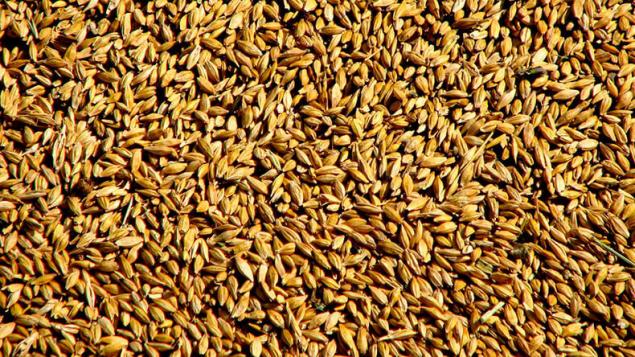
Soaking allows enzymes, lactobacilli and other friendly organisms to break down and neutralize phytic acid. Only 7 hours of soaking in warm, slightly acidic environment allows you to neutralize the main part of the phytic acid in grains. Simple soaking of milled cereals and cereal at night greatly improves their nutritional value.
Soaking in warm water also neutralizes enzyme inhibitors present in all seeds, and contributes to further development of a number of enzymes. The action of these enzymes, in turn, increases the amount of vitamins, especially vitamins of group B.
Scientists discovered that the proteins in grains, especially gluten, are very difficult to digest. A diet high in unfermented whole grains with high content of gluten, such as wheat, give heavy load on the digestive tract.
When the digestive process is disturbed because of age or heavy load, develop painful conditions in the form of allergies, celiac disease, mental disorders, chronic diseases of the gastrointestinal tract and the growth of Candida, albicans. Recent studies have linked gluten intolerance with multiple sclerosis. During the process of soaking and fermentation, the gluten and other difficult to digest proteins are broken down more simple ingredients and are better absorbed.
Animals that feed mainly on grain and other plants, have as many as 4 of the stomach (4 divisions of the stomach). The intestines are longer, as well as the total time of digestion. The person also only one stomach and, compared to herbivorous animals, is much shorter intestines.
This feature of human anatomy enables the animal products get into the intestines before they begin the process of decomposition, but makes a man less adapted to the consumption of grains — unless, of course, he will not allow bacteria from the microcosm to the plate to do his part of the work of digestion, as these bacteria work to digest in the first and second stomach of herbivorous animals.
Grains can be divided into two categories. Those that contain gluten, such as oats, rye, barley and especially wheat, should never be used without pre-soaking or fermentation; buckwheat, rice and millet do not contain gluten and is a whole lot better to digest.
Whole rice and whole millet contain the smallest number of Filatov compared to other grains, and therefore there is no need to soak them. However, they should boil for at least 2 hours in a high-nutrient gelatin broth. This will allow you to break the phytates that they contain, and to make up for the minerals that still remain bound and gelatin in the broth will greatly help digestion. We do not recommend the pressure cooker for cooking grain, as they cook them too fast.
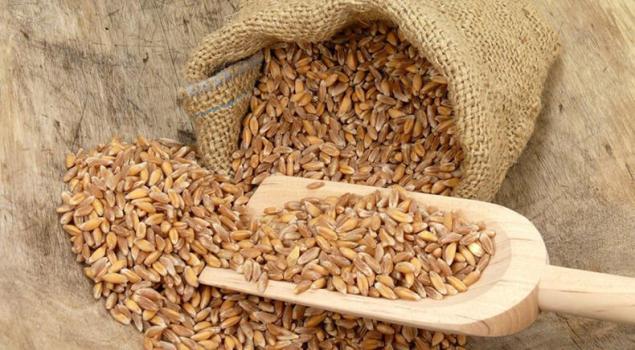
There are several types of grain, new for the ears of Western man. One of them is spelt (spelt), an ancient variety of wheat that were valued by medieval sage St. Hildegard because she helped the sick and people with weak Constitution.
Spelt contains gluten and is very suitable for baking sourdough bread. Some studies show that gluten, spelt is easily destroyed during fermentation, making it easier to digest than modern wheat varieties. In most bread recipes and baking spelt can replace modern wheat. (Recall that in the tale of Pushkin's Balda demanded the priest: "There do I give boiled spelt".).
Another ancient heirloom variety of wheat is Kamut, first mentions about which date back to the early Egyptian era. Some people allergic to modern wheat feel better when using it instead of spelt or Kamut.

Teff is a grain from Northern Africa, which is certainly fermented before to bake it into bread.
Quinoa comes to us from the South American Andes and was first described in Western literature by Dr. Weston price. He noted that women in the Andes, valued quinoa for its ability to affect the production of breast milk. Botanically quinoa is not a grain, and seeds of plants of the family Chenopodiaceae, which has high nutritional value. All types of quinoa should be soaked — the Indians of the Andes have recognized that the way neytralizuya the antinutrients.
Amaranth — another grain from South America that can be used in many following the book recipes.
Buckwheat — another forgotten grain is valued for its high content of amygdalin (laetril, vitamin B17, nitrilosides), warning cancer. Like quinoa, botanically buckwheat is not a grain. It's the seed of a plant, related to rhubarb.
If you buy milled grain or cereal, they should be purchased only if they are in the package, and not to take them loose, as then they quickly progorkaet. Much better to buy organic or biodynamic (grown according to biodynamic techniques) whole grains and grind them up or flattened into flakes at home using a special mill. You can also add a small amount of milled flax seed, to start the day with a supply of fatty acids omega-3.
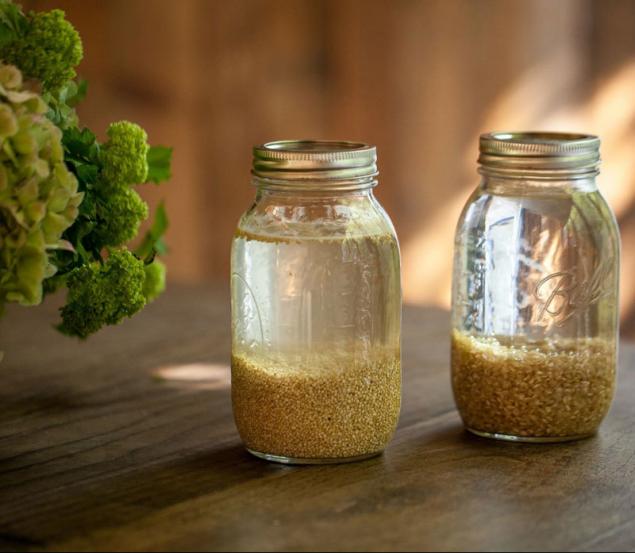
These cereals are very well combined with cream or oil-soluble activators which are a necessary catalyst for the assimilation of minerals. Usually people with milk Allergy can tolerate small amount of cream in the cereal or you can eat porridge with butter — a magical combination. We do not recommend soy milk, which has a lot of antinutrients.
We also do not recommend granola (muesli) — a popular "healthy" food made from grains subjected only to dry heat and therefore very hard to digest. Granola, like all industrial modified cereals should not take a place on the shelves in the kitchen. Cereals made by the extrusion process, where small flakes and various figures are formed using heat and pressure.
The extrusion process destroys many valuable substances in grain, makes rancid unstable oils and some proteins toxic. To grow a healthy generation of children, we should return to Breakfast of our ancestors — pre-soaked cereals and porridge-gruel.
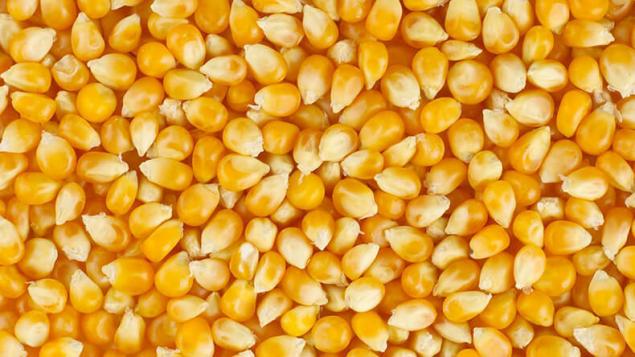
A few words about corn: traditional recipes talk about soaking corn or corn flour in lime water, which allows to release nicotinamide (vitamin B3, PP), which otherwise remains bound in the grain. Soaking also improves the amino acid profile in the fetus.
If you often use corn in cooking, the simple practice of soaking corn in lime water to avoid pellagra — disease caused by lack of vitamin B3 (PP), which is manifested by inflamed skin, fatigue and mental disorders.
Amazing properties of hemp seed + 6 healthy recipeStevia: the pros and cons of natural sugar substitute
In order to make lime water, put 1 ounce (28 grams) of sour lime in a 2-liter jar. Fill the jar with filtered water, mix well, close tightly and leave overnight. For night will fall deposits, and the remaining clear liquid is lime water. Keep the jar in a cool place (not in refrigerator) and use for soaking corn, a bit of moulding water from the banks.published
Source: okofinista.ru/yadoprodukty_hleb_i_termofilnye_drozhzhi_6.html
Our ancestors consumed whole grains, but they never made them as presented in modern cookbooks in the form of a suitable quick breads, granola (muesli) and others, quickly preparing casseroles and dishes.

Our ancestors and all uncivilized peoples soaked or fermented grains before cooking porridge, breads, cakes and grain dishes. One look at the recipes of the peoples of the world, it is sufficient to confirm this view.
In India rice and lentils are fermented for at least 2 days before made idli and dosas. In Africa the locals soaked overnight roughly grind the corn before adding it to soups and broths, but they also fermented corn and millet for several days to make the porridge called orgi. A similar dish but made from oats, were traditionally among the natives of Wales.
In some Oriental and Latin American countries it is customary for a long time to ferment the rice before cooking. Ethiopians prepare your outstanding bread injera, within a few days of fermenting grain called Teff. Mexican corn cakes, called pozol, are fermented in banana leaves, and sometimes within two weeks.
Before the invention of quick yeast Europeans made their own bread fermented sourdough. The first settlers of America were famous for their bread, pancakes and cakes leavened. And finally, throughout Europe grains were pre-soaked overnight and sometimes for several days in water or soured milk before you cook them porridge, or porridge, gruel. (Many older people will remember that before the packaging of cereal has been written about pre-soaking overnight).
It makes no sense to make assumptions that intuitive feeling forced our ancestors to soak and ferment grains before you eat them. More importantly, this ancient technique is in good agreement with that opened the modern science of cereal lately.
Any and all grains contain phytic acid (an organic acid that binds phosphorus) in the outer shell of the grain. Neutralized phytic acid can connect in the intestines with calcium, magnesium, copper, iron and especially zinc and thus prevent their absorption.
That's why a diet that includes the consumption of unfermented whole grains may lead to serious mineral deficiencies and bone loss. Fashionable and it is bad practice to consume large quantities of unprocessed bran often initially improves digestion and relieves constipation, but later can lead to irritable bowel syndrome and, in a longer time, other undesirable effects.

Soaking allows enzymes, lactobacilli and other friendly organisms to break down and neutralize phytic acid. Only 7 hours of soaking in warm, slightly acidic environment allows you to neutralize the main part of the phytic acid in grains. Simple soaking of milled cereals and cereal at night greatly improves their nutritional value.
Soaking in warm water also neutralizes enzyme inhibitors present in all seeds, and contributes to further development of a number of enzymes. The action of these enzymes, in turn, increases the amount of vitamins, especially vitamins of group B.
Scientists discovered that the proteins in grains, especially gluten, are very difficult to digest. A diet high in unfermented whole grains with high content of gluten, such as wheat, give heavy load on the digestive tract.
When the digestive process is disturbed because of age or heavy load, develop painful conditions in the form of allergies, celiac disease, mental disorders, chronic diseases of the gastrointestinal tract and the growth of Candida, albicans. Recent studies have linked gluten intolerance with multiple sclerosis. During the process of soaking and fermentation, the gluten and other difficult to digest proteins are broken down more simple ingredients and are better absorbed.
Animals that feed mainly on grain and other plants, have as many as 4 of the stomach (4 divisions of the stomach). The intestines are longer, as well as the total time of digestion. The person also only one stomach and, compared to herbivorous animals, is much shorter intestines.
This feature of human anatomy enables the animal products get into the intestines before they begin the process of decomposition, but makes a man less adapted to the consumption of grains — unless, of course, he will not allow bacteria from the microcosm to the plate to do his part of the work of digestion, as these bacteria work to digest in the first and second stomach of herbivorous animals.
Grains can be divided into two categories. Those that contain gluten, such as oats, rye, barley and especially wheat, should never be used without pre-soaking or fermentation; buckwheat, rice and millet do not contain gluten and is a whole lot better to digest.
Whole rice and whole millet contain the smallest number of Filatov compared to other grains, and therefore there is no need to soak them. However, they should boil for at least 2 hours in a high-nutrient gelatin broth. This will allow you to break the phytates that they contain, and to make up for the minerals that still remain bound and gelatin in the broth will greatly help digestion. We do not recommend the pressure cooker for cooking grain, as they cook them too fast.

There are several types of grain, new for the ears of Western man. One of them is spelt (spelt), an ancient variety of wheat that were valued by medieval sage St. Hildegard because she helped the sick and people with weak Constitution.
Spelt contains gluten and is very suitable for baking sourdough bread. Some studies show that gluten, spelt is easily destroyed during fermentation, making it easier to digest than modern wheat varieties. In most bread recipes and baking spelt can replace modern wheat. (Recall that in the tale of Pushkin's Balda demanded the priest: "There do I give boiled spelt".).
Another ancient heirloom variety of wheat is Kamut, first mentions about which date back to the early Egyptian era. Some people allergic to modern wheat feel better when using it instead of spelt or Kamut.

Teff is a grain from Northern Africa, which is certainly fermented before to bake it into bread.
Quinoa comes to us from the South American Andes and was first described in Western literature by Dr. Weston price. He noted that women in the Andes, valued quinoa for its ability to affect the production of breast milk. Botanically quinoa is not a grain, and seeds of plants of the family Chenopodiaceae, which has high nutritional value. All types of quinoa should be soaked — the Indians of the Andes have recognized that the way neytralizuya the antinutrients.
Amaranth — another grain from South America that can be used in many following the book recipes.
Buckwheat — another forgotten grain is valued for its high content of amygdalin (laetril, vitamin B17, nitrilosides), warning cancer. Like quinoa, botanically buckwheat is not a grain. It's the seed of a plant, related to rhubarb.
If you buy milled grain or cereal, they should be purchased only if they are in the package, and not to take them loose, as then they quickly progorkaet. Much better to buy organic or biodynamic (grown according to biodynamic techniques) whole grains and grind them up or flattened into flakes at home using a special mill. You can also add a small amount of milled flax seed, to start the day with a supply of fatty acids omega-3.

These cereals are very well combined with cream or oil-soluble activators which are a necessary catalyst for the assimilation of minerals. Usually people with milk Allergy can tolerate small amount of cream in the cereal or you can eat porridge with butter — a magical combination. We do not recommend soy milk, which has a lot of antinutrients.
We also do not recommend granola (muesli) — a popular "healthy" food made from grains subjected only to dry heat and therefore very hard to digest. Granola, like all industrial modified cereals should not take a place on the shelves in the kitchen. Cereals made by the extrusion process, where small flakes and various figures are formed using heat and pressure.
The extrusion process destroys many valuable substances in grain, makes rancid unstable oils and some proteins toxic. To grow a healthy generation of children, we should return to Breakfast of our ancestors — pre-soaked cereals and porridge-gruel.

A few words about corn: traditional recipes talk about soaking corn or corn flour in lime water, which allows to release nicotinamide (vitamin B3, PP), which otherwise remains bound in the grain. Soaking also improves the amino acid profile in the fetus.
If you often use corn in cooking, the simple practice of soaking corn in lime water to avoid pellagra — disease caused by lack of vitamin B3 (PP), which is manifested by inflamed skin, fatigue and mental disorders.
Amazing properties of hemp seed + 6 healthy recipeStevia: the pros and cons of natural sugar substitute
In order to make lime water, put 1 ounce (28 grams) of sour lime in a 2-liter jar. Fill the jar with filtered water, mix well, close tightly and leave overnight. For night will fall deposits, and the remaining clear liquid is lime water. Keep the jar in a cool place (not in refrigerator) and use for soaking corn, a bit of moulding water from the banks.published
Source: okofinista.ru/yadoprodukty_hleb_i_termofilnye_drozhzhi_6.html
